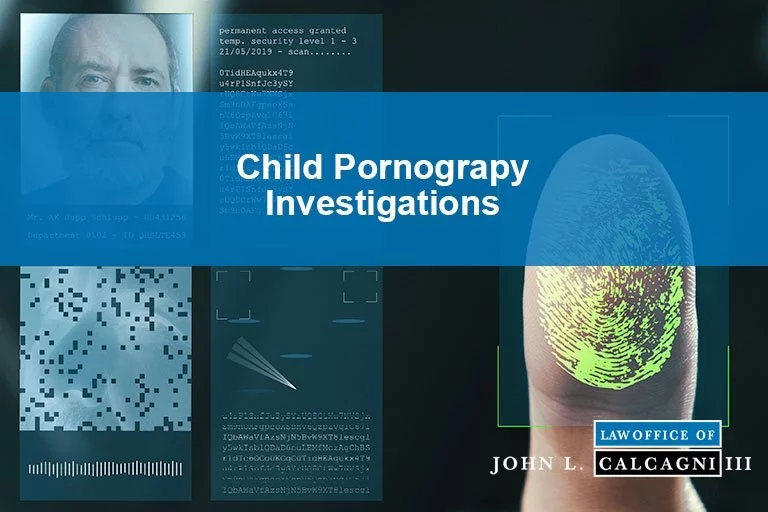Child Pornography Investigations

Child pornography is defined as………This material, unlike adult pornography, is illegal under both state and federal laws. Child pornography is considered obscene material that has no constitutional protection under the First Amendment. With the proliferation of computers, mobile devices, and the internet, child pornography investigations and resulting criminal prosecutions have increased exponentially.
Child pornography investigations are most often initiated in two ways. One way is through a cyber tip. This occurs where online or internet companies offering cloud-based storage services, peer-to-peer networking, or social media routinely scan files stored on their systems to protect against the storage and transfer of child pornography. If a company detects the presence of child pornographic materials on its network, it alerts law enforcement. The cyber tip may include the date, time, account information, account holder, and internet protocol (IP) address related to the suspicious file(s) believed to be child pornography or account that stored, received, or transmitted it. The tip will enable law enforcement to initiate a criminal investigation into the possession, receipt, transfer, or production of child pornography.
A second way child pornography investigations initiate is where law enforcement uses software to detect the download, upload, or transfer of known child pornography files. Every electronic file has a unique digital fingerprint. This includes electronic files consisting of images and videos. Because child pornography is not widely produced, law enforcement has sought to identify and catalog all known digital child pornography files, as well as to identify the victim(s) depicted in the materials.
The unique electronic fingerprints for these files are uploaded into sophisticated software that law enforcement uses to monitor the internet, like a radar system. The software seeks to capture the transfer of any known child pornographic image or video, whether by email, upload, or download.
The software can identify the child pornography file(s), as well as the IP addresses for the sender and receiver of the file(s). Once armed with this information, the government identifies through the Federal Communications Commission (FCC) the internet service provider(s) to whom the identified IP addresses are registered.
The government then issues administrative subpoenas to the internet service providers seeking the customer information (name, address, and phone number) to whom the IP address is assigned. This enables law enforcement to then seek a warrant for the property where the IP address is assigned in order to search for and seize electronic devices, which are forensically analyzed for the presence of child pornography files. If child pornography material is found, the owner or possessor of the device where the image(s) or video(s) is discovered is arrested and criminally charged with child pornography offense(s).
Child pornography crimes involve the possession, transfer, distribution, or creation of these illicit materials. These crimes exist under both state and federal laws. Child pornography investigations are often conducted by teams or task forces comprised of state, local, and federal law enforcement officers.
Once an arrest is made, the government will then determine where the offenses are prosecuted, whether in state or federal court. Any child pornography crime is considered a felony. These crimes are also considered sex offenses, which upon conviction, result in collateral sex offender registration, monitoring, and counseling requirements. Being charged with a child pornography offense can be a frightening and life-changing event.
If you are either under investigation for or have been criminally charged for child pornography, contact the Law Office of John L. Calcagni III today at (401) 351-5100 for a free consultation.
